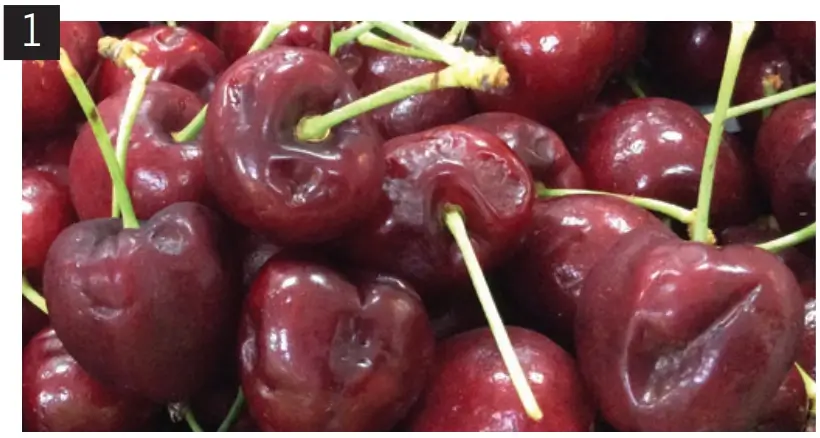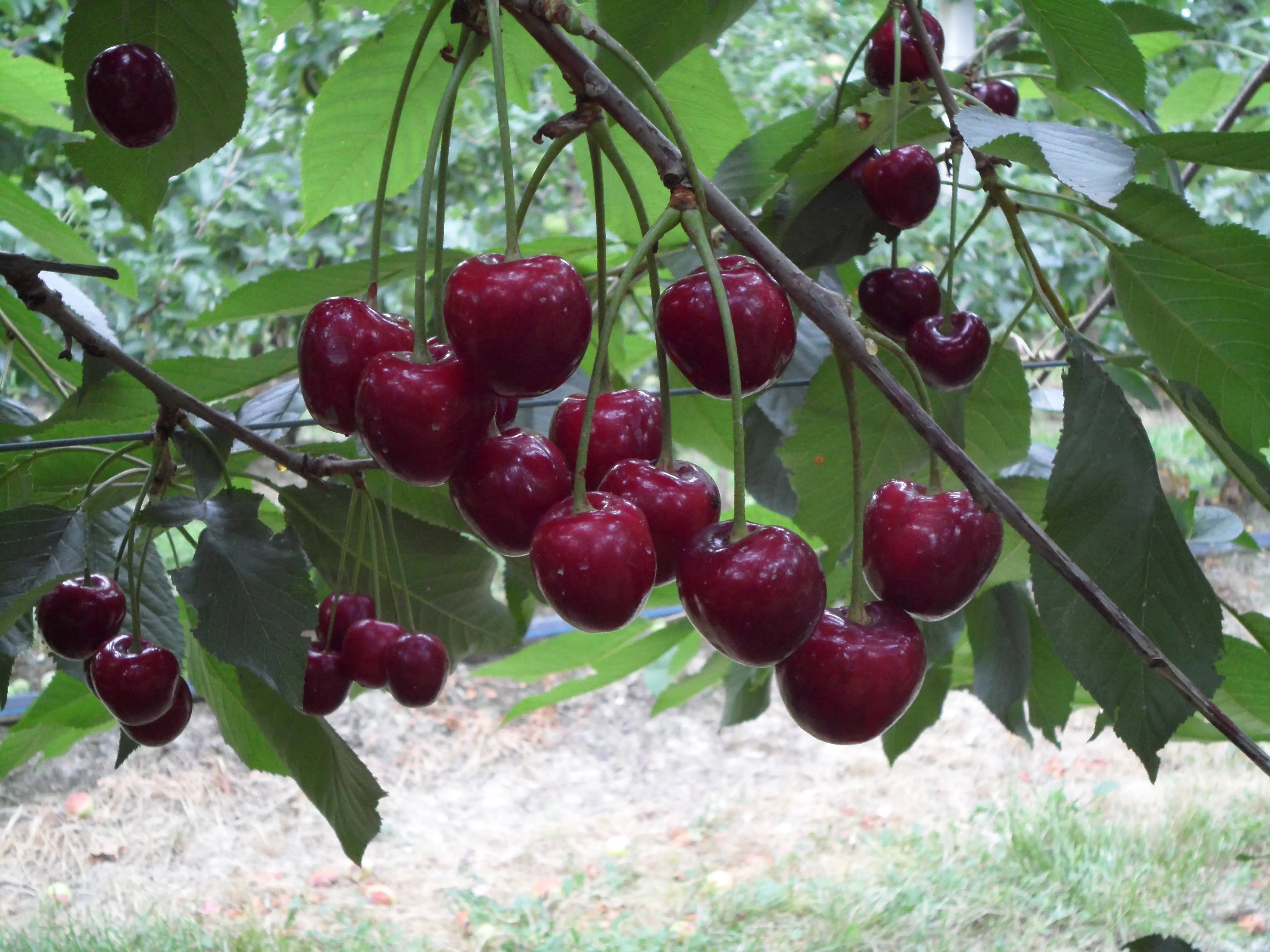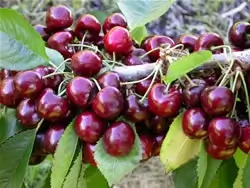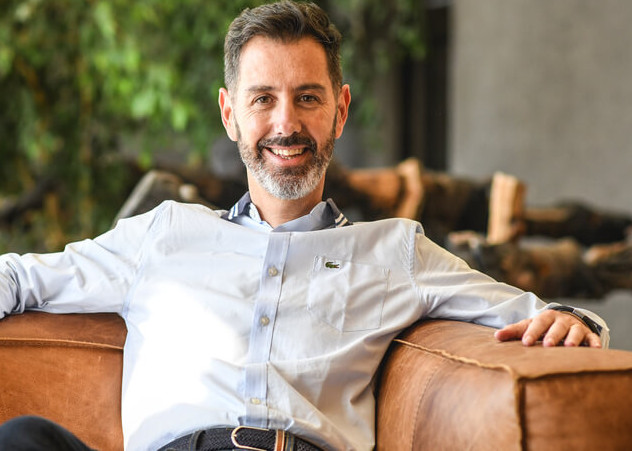The pitting of cherries or surface depression is a type of damage that affects the appearance and quality of these fruits, especially those intended for fresh consumption. This phenomenon is characterized by the appearance of small depressions or indentations on the surface of the fruit, which can compromise its visual appeal and commercial value.
Although it does not compromise food safety, pitting reduces the perceived quality by consumers and can represent a significant issue in the supply chain.
What is pitting in cherries?
Pitting manifests as small indentations or bruises in the skin of the cherry. It is often the result of mechanical or physiological damage that occurs during harvest, handling, storage, or transportation of the fruit. These marks usually do not penetrate the cherry's pulp but impair its presentation, and in severe cases, can lead to premature fruit deterioration.
The main causes of cherry pitting are multiple:
- Mechanical damage: bumps or excessive pressure during harvesting and packaging.
- Improper temperature: sudden temperature changes or improper handling in the cold chain.
- Dehydration: Moisture loss in the cherry skin can make it more prone to indentation.
- Physiological conditions: some studies suggest that pitting may also be a response to cellular imbalances in the fruit's structure, exacerbated by certain environmental factors.

How to prevent cherry pitting?
Fortunately, there are various practices and techniques that can be implemented in the production, harvesting, and distribution of cherries to minimize the incidence of pitting. Some of the most effective ones are as follows:
1. Careful harvesting
Cherry harvesting should be done carefully to avoid mechanical damage. Harvesters should use techniques that minimize pressure on the fruits, such as avoiding the stacking of large amounts in collection containers and using baskets or crates designed to protect the fruit.
It is also important to harvest cherries at an optimal ripeness level. Fruits that are under or overripe are more susceptible to damage, increasing the risk of pitting.
2. Proper temperature management
One of the most important factors in preventing pitting is maintaining the cold chain throughout the post-harvest process. Rapid cooling of the cherries after harvest, ideally within the first few hours, is crucial to reduce the risk of damage. The ideal temperatures range from 0°C to 1°C with high relative humidity (90-95%).
It is necessary to avoid extreme temperature fluctuations as drastic changes can alter the fruit’s cell structure, making it more vulnerable to pitting.
3. Humidity control
Cherries are delicate fruits that require precise humidity control to prevent dehydration. During storage and transportation, it is essential to ensure adequate humidity levels in the environment, using techniques such as applying misters in refrigeration units to maintain the fruit’s freshness. Packaging also plays a key role, so it is recommended to use materials that retain moisture without smothering the fruit.
4. Selection of resistant varieties
Some cherry varieties are more susceptible to pitting than others. Therefore, growers can choose to plant varieties that have shown greater resistance to pitting damage. Additionally, genetics and cultural practices can influence the predisposition of fruits to develop pitting, making research and careful selection of cultivars essential.
Although pitting can affect any variety if improperly managed, the following are considered more resistant:
Lapins
This variety is quite resistant to pitting and is valued for its firm flesh and crunchy texture. It is self-pollinating, making it popular among growers, and has a longer shelf life if properly handled in the cold chain.
Sweetheart
Another variety known for its resistance to pitting. It has a thicker, firmer skin, providing better protection against physical damage and pitting depressions. Additionally, it is one of the late-season varieties, benefiting from more advanced post-harvest handling techniques.
Skeena
Renowned for its firmness and general resistance to damage. This variety is particularly suited for long-distance transportation due to its lower susceptibility to pitting, making it a preferred choice for exporters.
Regina
This variety is highly appreciated for its resistance to cracking and pitting. Regina has a firm skin and juicy flesh, and its cellular structure appears less susceptible to damage from slight pressure or bruising.
 Regina.
Regina.
Kordia
Another robust variety with good resistance to cracking and pitting. It is known for its firmness, dark color, and excellent taste. This combination makes it very attractive for both growers and consumers, and it withstands transport and storage well.
Chelan
One of the earliest varieties to mature, it is known for its resistance to pitting and cracking. It is a firm cherry with excellent appearance, making it popular among growers looking for a product that can be kept in good condition during storage and distribution.
Bing (with proper handling)
Although the Bing variety is more susceptible to pitting than others, with careful handling during harvest and post-harvest, this issue can be minimized. This variety remains popular for its flavor and juiciness but requires more attention to handling to avoid damage.
Other factors to consider to avoid cherry pitting
Besides the genetics of the variety, climate and cultivation techniques can also affect susceptibility to pitting. Varieties grown in regions with moderate temperatures and careful management practices tend to have better resistance to damage and an extended shelf life.
In addition to the genetics of the variety, both climate and cultivation techniques can influence the susceptibility to pitting. Varieties grown in regions with moderate temperatures and careful management practices tend to be less prone to developing pitting. Growers who implement advanced post-harvest technologies and carefully monitor the cold chain can also reduce the incidence of pitting in traditionally more susceptible varieties.
 Skeena.
Skeena.
5. Careful transportation and storage management
During transport, cherries must be well protected from shocks and sudden movements. It is recommended to use containers with dividers or trays that limit contact between the fruits, reducing the risk of pressure and friction between them. It is important that transportation occurs under controlled temperature and humidity conditions, ensuring that the cold chain is not interrupted.
6. Use of post-harvest treatments
There are chemical and physical treatments that can be applied to cherries after harvesting to reduce the incidence of pitting. Some growers use calcium solutions or fungicides to strengthen the fruit's skin and reduce its susceptibility to damage. Additionally, cold air treatments and atmospheric control systems can help maintain fruit quality during extended storage and transportation.
Conclusions
Cherry pitting is a significant challenge for growers, distributors, and retailers seeking to offer consumers a high-quality product. However, by implementing correct practices at every stage of the supply chain - from harvest to storage - it is possible to minimize the risk of this type of damage and ensure that cherries reach the market in optimal condition. Maintaining a strict cold chain, careful handling of the fruit, and the use of post-harvest technologies are some of the key strategies for avoiding pitting and protecting the commercial value of cherries.
This holistic approach not only preserves the visual quality of cherries but also helps to extend their shelf life and enhance the consumer experience.
Source: Portal Frutícola
Images: OSU; Mundoagro; SL Fruit Service
Cherry Times - All rights reserved















